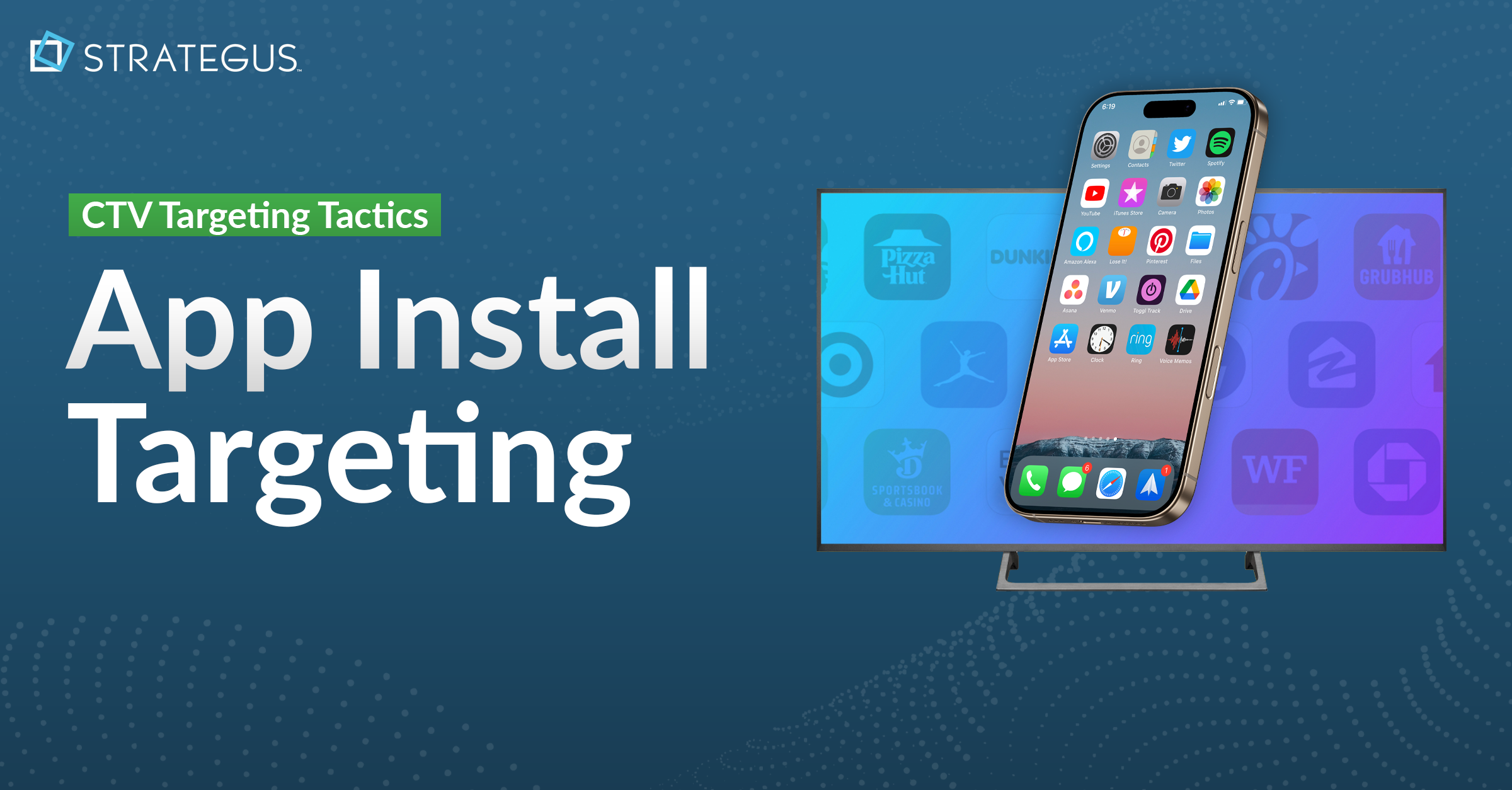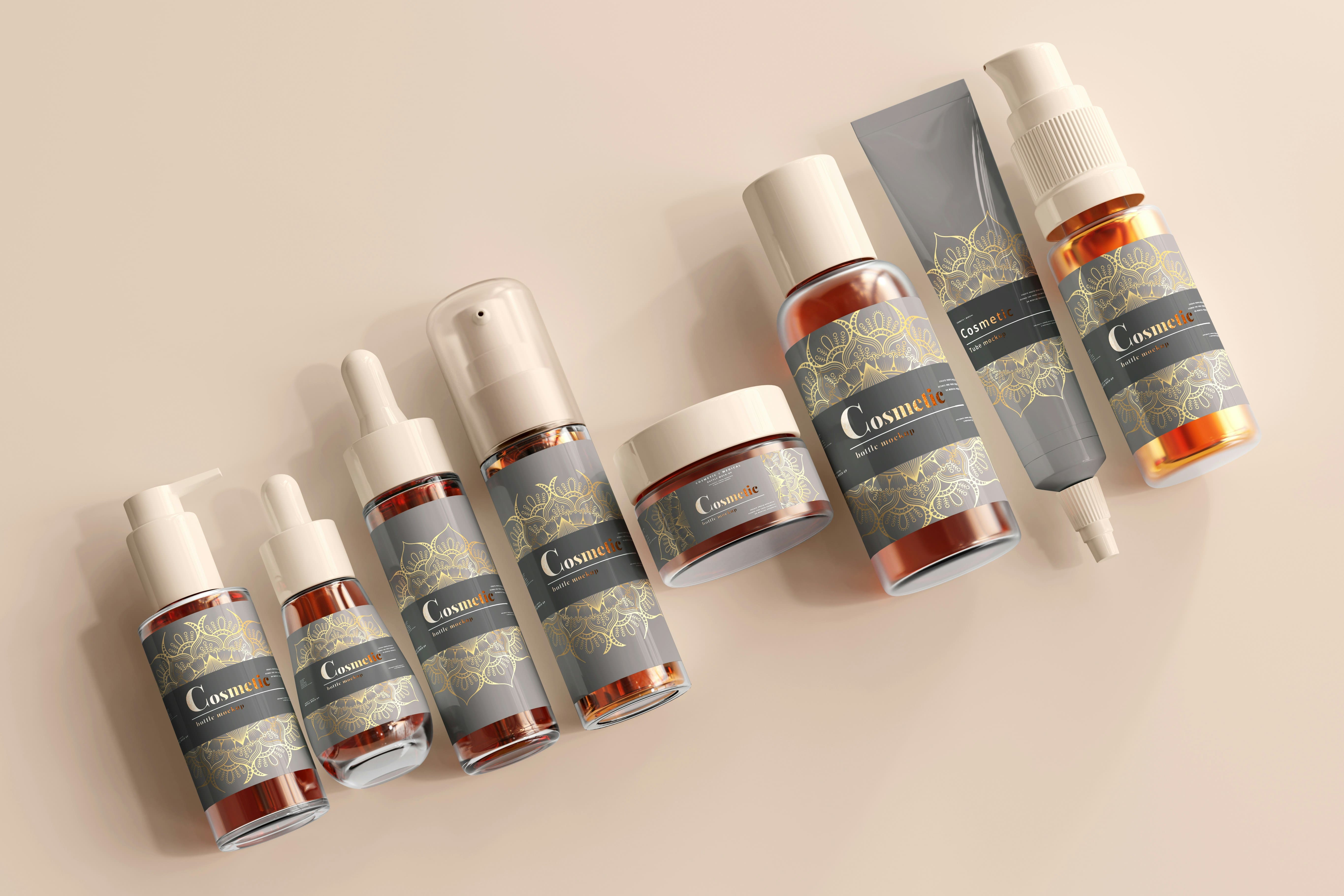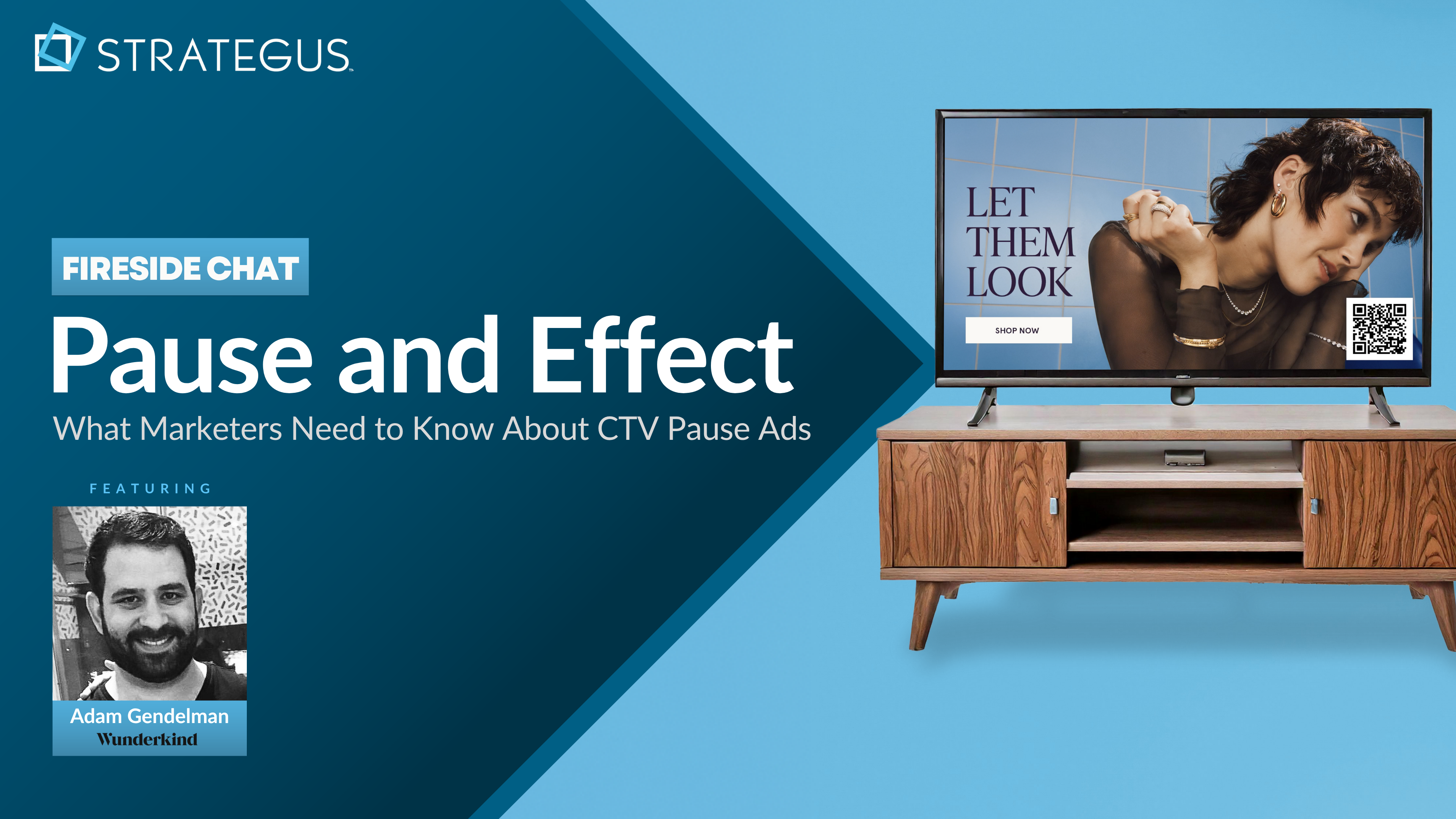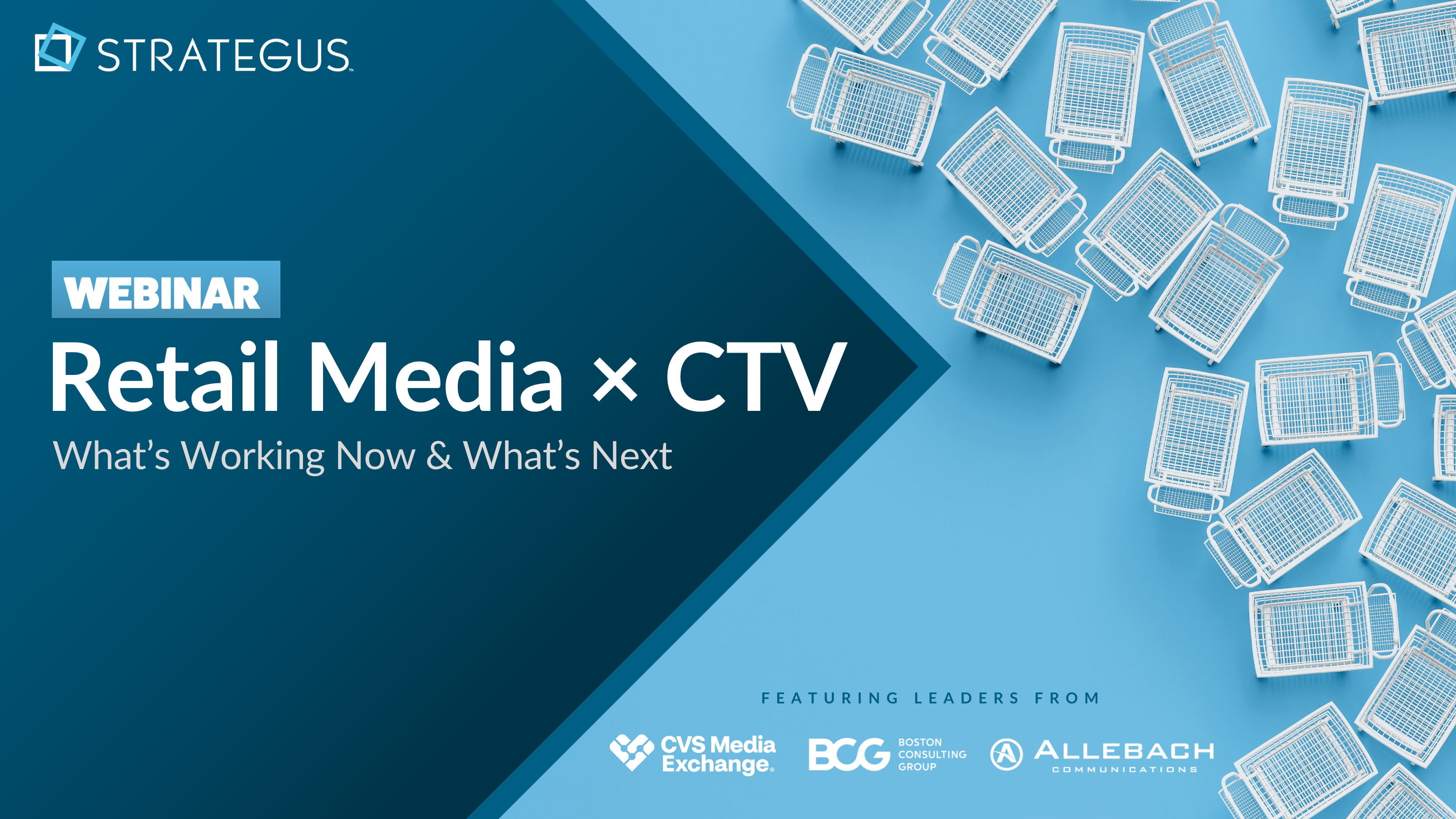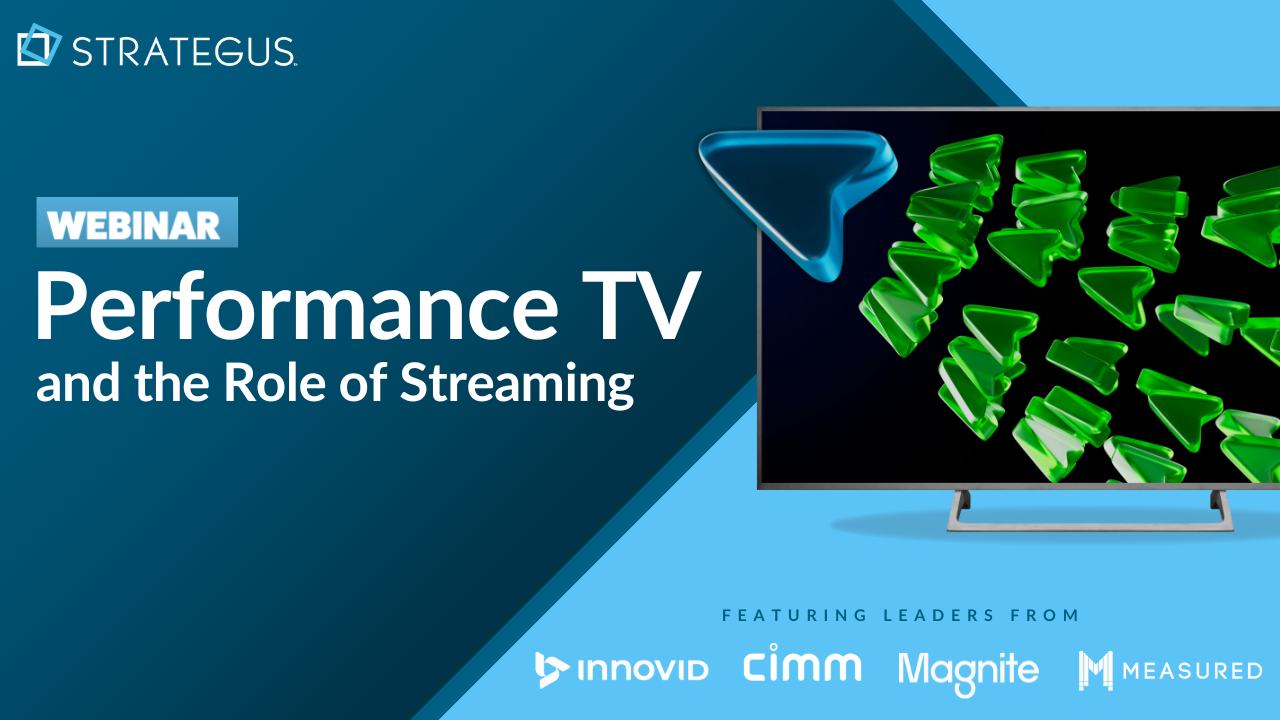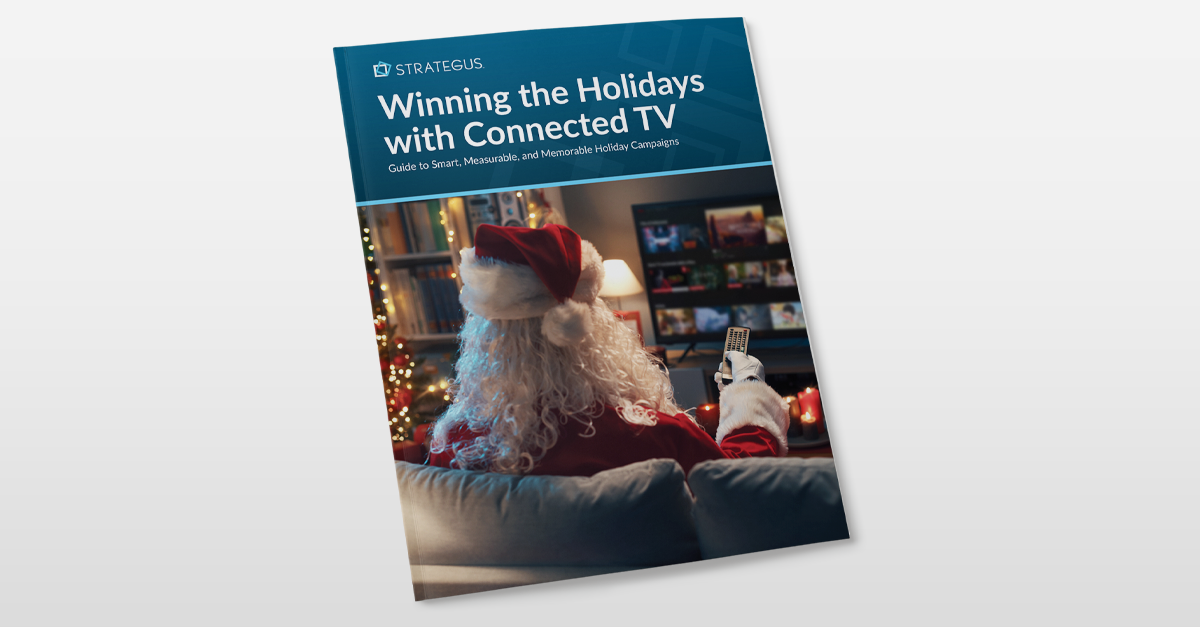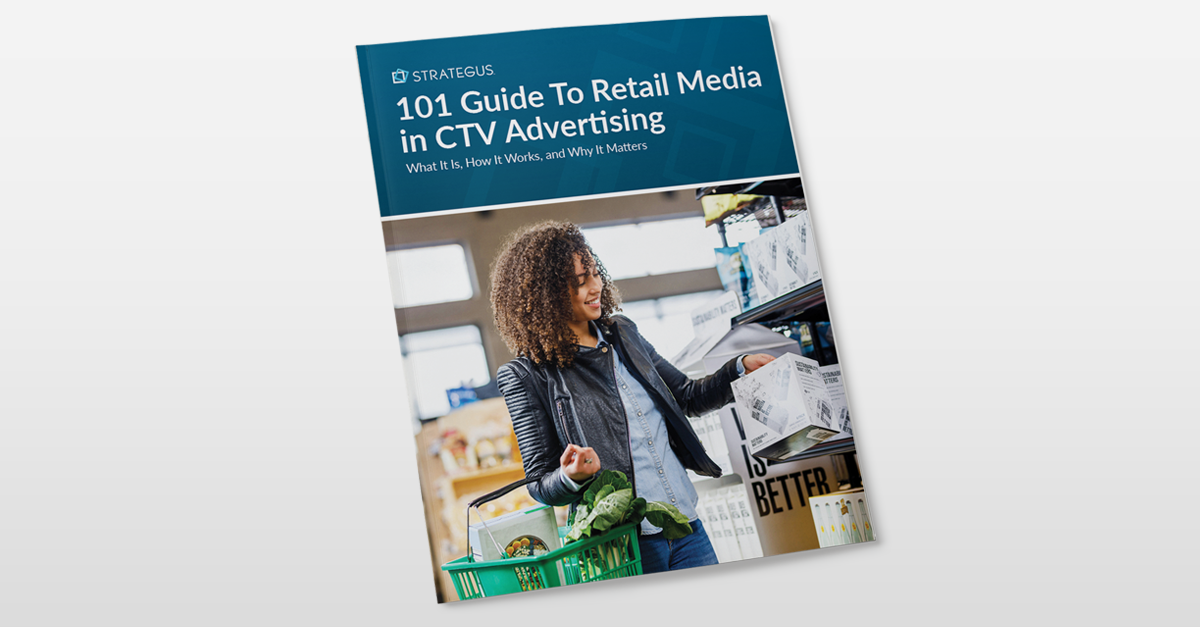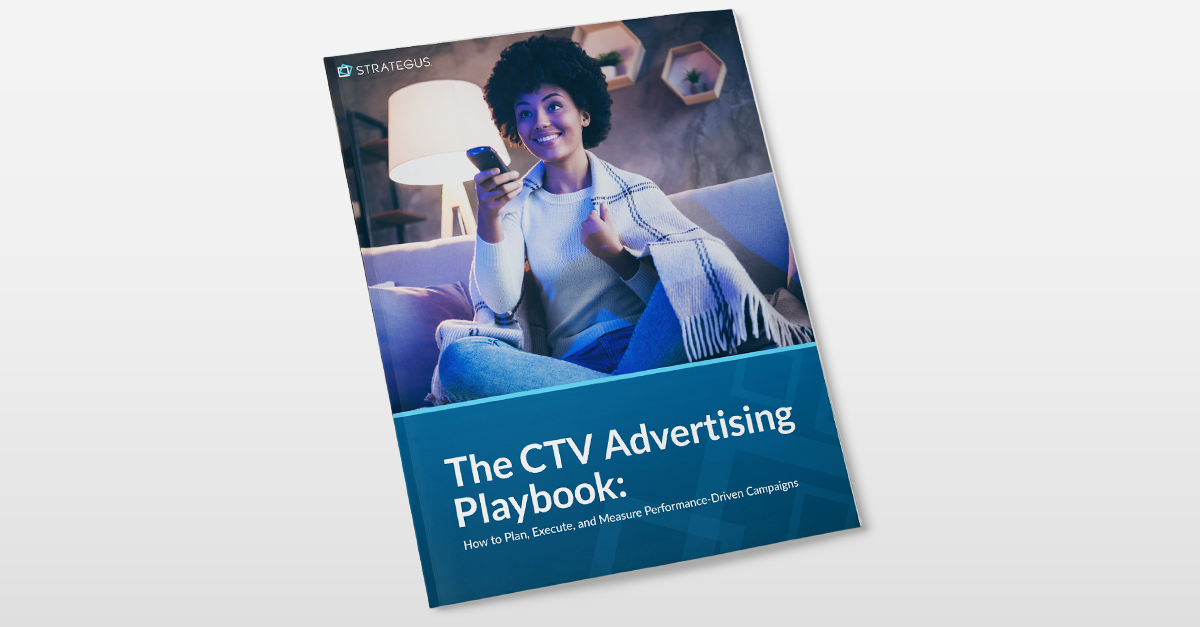- Home
- Strategus Blog
- CTV Best Practices 2025: How to Plan High-Impact Campaigns
CTV Best Practices 2025: How to Plan High-Impact Campaigns
 Traci Ruether
Traci Ruether
14 minutes read
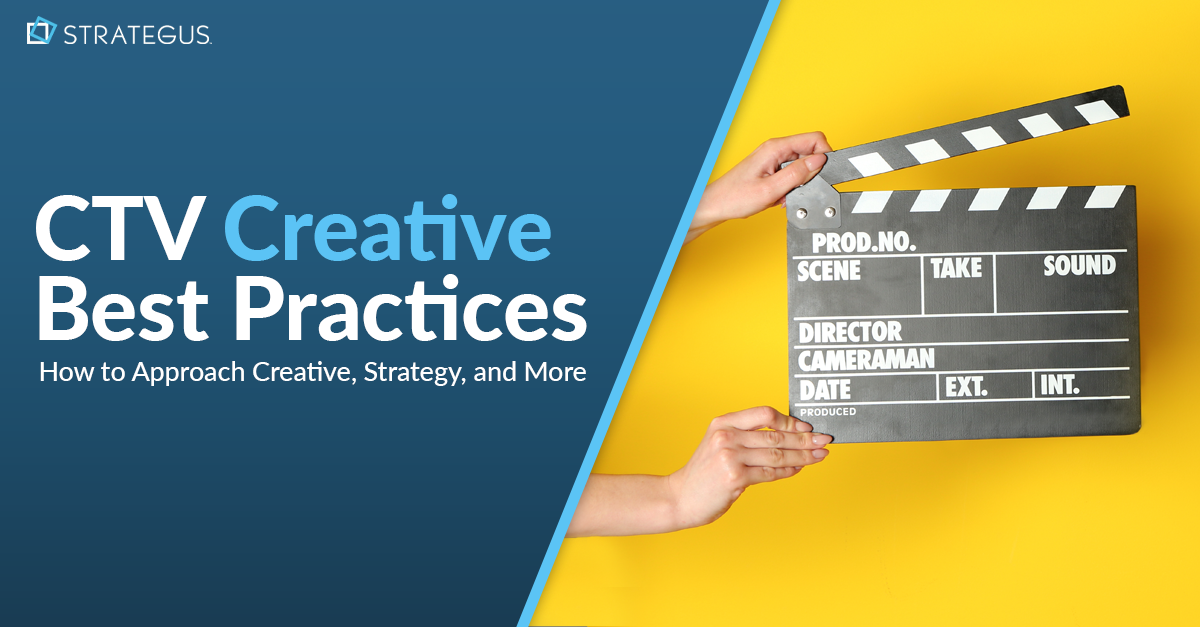
CTV advertising is changing fast, and so are the rules for success. What worked last year may seem obsolete in 2025.
To stay in the game, advertisers need smarter strategies, sharper targeting, and measurement that proves impact. This guide covers the best practices to help you plan, launch, and scale high-performing CTV campaigns this year.
Key Takeaways
|
CTV Best Practices |
Why It's Important |
|
Set campaign goals and choose the right audience |
Clear goals guide targeting, messaging, and budget allocation. Balanced audience targeting improves reach and performance without wasting spend. |
|
Review and use existing video assets |
Ensures ads are polished, consistent, and effective without unnecessary production costs. High-quality, clear, and simple ads build trust and boost recall. |
|
Refresh ads or build for streaming from the start |
Tailors creative for digital environments. Updated CTAs, voiceovers, dynamic content, and QR codes improve engagement and make ads actionable. |
|
Personalize creative to different audiences |
Matching creative to audience segments increases relevance, engagement, and conversion rates. Avoids one-size-fits-all messaging. |
|
Nail the basic requirements and specs |
Meeting technical specs prevents playback issues, buffering, or rejection from platforms. Ensures smooth user experience and campaign approval. |
|
Avoid ad fatigue with the right limits |
Frequency management and ad variety prevent audiences from tuning out or feeling annoyed, protecting brand reputation and ROAS. |
|
Integrate CTV ads into full-funnel campaigns |
Creates a connected strategy across awareness, consideration, and conversion. Reinforces messaging and maximizes impact through cross-channel retargeting. |
|
Test and optimize campaigns in flight |
Continuous monitoring and adjustments reduce wasted spend and improve performance. Data-driven optimization increases ROI over time. |
1. Set Campaign Goals and Choose the Right Audience
CTV lets you target viewers directly and track results. So before you create your ad, get clear on your goal.
Are you trying to reach new people (brand awareness) or bring past visitors back (retargeting)? Each goal needs different data, messaging, and ways to measure success.
Once you know your goal, it’s easier to define your audience and set a budget for each group. Good audience targeting depends on data. Ideally, work with a partner like Strategus that offers strong data tools and targeting options.
Keep these tips in mind when building your audience:
- Don’t Go Too Narrow: Avoid targeting that’s so specific it limits your reach. Aim for a balance between precision and scale.
- Look Beyond Basic Info: Demographics like age or location aren’t enough. Focus on buyer interests, needs, and habits.
- Use Both First- and Third-Party Data: First-party data shows what your actual customers do. Third-party data helps you find new audiences. Combining both gives you a more complete picture.
2. Review and Use Your Existing Video Assets
Before you start creating anything new, check what you already have. Most of the time, your current videos can work just fine. Do a full review to make sure they meet these basic standards:
- Good Quality Production: Bad quality stands out, especially on a big screen. Use pro-level equipment or hire a production team so your ad feels polished and trustworthy.
- Strong Branding: Make sure your logo and brand colors are clear and easy to spot. If you’re running multiple ads in one campaign, they should all have a consistent look and feel.
- One Clear Message: Stick to one main idea and repeat it. Viewers are easily distracted, so simple and focused messaging works best.
- Use Sound to Your Advantage: Music or sound effects help your ad stick in people’s minds, especially if they’re not looking at the screen. A catchy tune or jingle can really boost recall.
- Clean and Simple Design: Don’t overload your ad with too much text or cluttered visuals. Use bold fonts, clear messages, and strong contrast so your ad is easy to read, even from far away.
3. Refresh Your Ads or Build for Streaming From the Start
Switching from traditional TV to streaming TV isn’t just about reusing old ads. You should adjust your videos to take advantage of digital tools and data.
That doesn’t mean starting from scratch. You can update your current videos by tweaking the messaging or adding elements to improve performance. Here’s what to focus on:
Match Your CTA to Your Goal
Your call to action (CTA) should match your campaign goal. If you want people to visit your website, include the URL. If your goal is foot traffic, show your store’s address clearly.
Avoid using the same CTA across all campaigns, tweak things based on what you want viewers to do.
Use Voiceovers
Voiceovers help boost results. Why? Because people might be looking at their phones during an ad. A voiceover keeps the message clear even if they’re not watching the screen.
Use your CTA in both the voiceover and the text on screen. Also, always add subtitles for accessibility.
Highlight Sales or Inventory
Fresh, relevant ads work better. Instead of making a new ad each time, use dynamic creative to update content easily.
For example, an auto dealer can automatically show current car inventory or promote sales without re-shooting the entire video. You can even personalize ads based on audience type, like EVs for eco-conscious buyers or minivans for families.
Strategus offers dynamic creative tools that make these updates quick and easy.
Add Interactive Tools Like QR Codes

Adding QR codes to your CTV ads lets viewers take action immediately. QR codes may seem like a bother but they add an interactive element to your company and:
- They make your TV ad clickable.
- They let people interact across different devices.
- They give you data to measure engagement.
Just make sure the QR code is large and easy to scan from across the room. Add a strong CTA, like a discount or special offer, to get people to scan.
4. Personalize Creative to Different Audiences

With CTV’s advanced targeting tools, it’s important to match your ad creative to each audience. If you’re segmenting viewers but showing everyone the same ad, you’re missing out.
Different people care about different things, so your message, visuals, and products should change depending on who you’re talking to.
Example: A Colorado travel company finds three key customer types:
- Ski Fans: Show ski resorts, people on the slopes, and promos for winter trips.
- Outdoor Explorers: Feature hiking trails, lakes, and campsites.
- Luxury Travelers: Highlight mountain spas, fine dining, 5-star hotels, and VIP deals.
These targeted ads will always do better than a one-size-fits-all version.
If you’re short on time or budget, tools like dynamic creative and social media repurposing make it easy to update and personalize existing videos. Strategus offers both as part of our in-depth advertising services.
5. Nail the Basic Requirements and Specs
Once you’ve completed the steps above, you’ll want to package your assets into the correct size and file format. Every platform has their own set of requirements and specs. For example, here are Netflix’s ad guidelines.
- Duration Options: 10s, 15s, 20s, 30s (pre-roll); 10s, 15s, 20s, 30s, 45s, 60s, 75s (mid-roll)
- File Formats: MP4 or MOV
- Video Codec / Color / Frame Rate: preferred Apple ProRes (MOV) or H.264 (MP4); use BT.709 color space; frame rates 23.976, 24, 25, 29.97, or 30; constant frame rate
- Resolution & Scan: 1920×1080 (HD), progressive scan
- Bitrate: for H.264 > 8 Mbps (720p) or > 12 Mbps (1080p); for ProRes > 42 Mbps (720p) or > 80 Mbps (1080p)
- Audio: PCM preferred or AAC-LC accepted; stereo 2 channels; 48 kHz sample rate; 16 or 24 bit depth (for PCM); minimum 192 kbps (for AAC)
- Loudness: average loudness = −24 LKFS ±2; sample peaks must not exceed −2 dB
Getting the technical components right is absolutely essential to ensuring a seamless viewing experience. Failure to meet these specs can cause latency and buffering, potentially causing viewers to abandon the app or even reboot their devices. Your ad might not even get that far as sites like Netflix, Hulu, Peacock, etc. are extremely critical of ads that don’t follow their specs.
6. Avoid Ad Fatigue With the Right Limits
If people see the same ad too often, they start to ignore it. This is called ad fatigue, and it can hurt your return on ad spend (ROAS). It often happens when the same ad plays multiple times in a row.
A bit of frequency is helpful, most buyers need to see a brand several times before taking action, but too much is a problem. Here’s how to prevent that:
Rotate at Least Three Ads
Using just one ad gets boring fast, especially with a narrow audience. Run at least three different creatives at the same time to keep things fresh and less repetitive.
Tell a Story With Sequential Ads
Instead of saying everything in one ad, break your message into a series. You can even customize the order based on what people do.
For example:
- If someone clicks on ad A, show them ad B with a next-step message.
- If they don’t, show them ad C to re-engage.
This makes your message more interesting and keeps people engaged.
Refresh Every 3 Months
If you can’t run multiple ads at once, update your creative at least once every quarter. Viewers usually get tired of seeing the same ad after 3 months.
Use Different Ads for Retargeting
If you’re retargeting viewers who saw your CTV ad online (like on YouTube), don’t reuse the same ad. Instead, create new ads that build on your original message and move people further down the funnel.
Set Frequency Caps
If someone already engaged with your ad, don’t keep hitting them with the same message. Too many repeats can annoy people and make your brand feel spammy.
Make sure your CTV partner supports frequency capping to limit how often someone sees your ad.
Watch Frequency Closely
Smaller audiences are more likely to burn out quickly. Track how often your ads are showing. If frequency is getting too high, try:
- Expanding your audience
- Targeting new locations
- Refreshing your message
This takes time, which is why Strategus actively monitors and optimizes campaigns for you.
Track Landing Page Activity
Are people still clicking your ad and visiting your site? If yes, your ad is still working.
If clicks or conversions start dropping, it’s a sign your creative is getting old, and time for a refresh to re-engage your audience.
7. Integrate Your CTV Ads Into Full-Funnel Campaigns

CTV ads shouldn’t run in a vacuum. Rather, they should be linked with retargeting efforts in more clickable formats like paid search ads, social media ads, display ads, and online video ads.
When building a retargeting campaign, you’ll want to be intentional about the channels and messaging used at each stage of the journey. Here’s an example of how you could design a CTV-centric strategy that drives results.
|
Stage |
Channels & Approach |
|
Awareness |
CTV ads: Expose ideal customers to your brand with awareness messaging. Display ads: Increase brand visibility by running display ads on relevant websites. |
|
Consideration |
CTV ads: Reinforce the value of your offering with subsequent CTV ads. Display ads: Stay top-of-mind by reaching users who’ve already been exposed to your brand. Streaming audio ads: Retarget potential buyers on music and podcast platforms. Online video ads: Reach previous viewers of CTV ads on YouTube and other video services. |
|
Conversion |
CTV ads: Make it easy for viewers to convert by serving ads with QR codes and a clear call to action. Display ads: Give users another opportunity to click through to your website when actively engaging online. Online video ads: Deliver more conversion-focused messaging in an online video format. Paid social ads: Place clickable ads in your prospect’s social media feeds to drive purchases. Paid search ads: Reach users searching relevant keywords in Google. |
Combining all of these marketing efforts into a unified approach is the best way to drive performance. It also delivers the most value from your investment by keeping your brand top-of-mind until a buyer is ready to convert and delivering relevant messaging each time you interact.
At Strategus, we’ve found that using a cross-device retargeting strategy like the one detailed above can increase conversions significantly. That’s why it’s a standard part of our approach to CTV.
8. Test and Optimize Campaigns in Flight
CTV is digital. And just like other digital channels, CTV campaigns should be monitored and optimized on an ongoing basis. A “set it and forget it” mentality leads to missed opportunities and wasted ad spend.
As such, our final tip is to test, test, test and continuously refine your campaigns based on the data.
Obviously, this requires hands-on management and optimization. For this reason, many brands and agencies lacking in-house expertise chose to enlist the help of a managed services partner like Strategus to extend their team.
Turn Best Practices Into Better Results with Strategus
Running a high-impact CTV campaign in 2025 means more than just checking boxes, it takes smart strategy, constant optimization, and creative that converts. That’s where Strategus comes in.
Here’s what you get when working with Strategus:
- Expert-built, full-funnel campaign strategies
- Access to 100+ data providers for precision targeting
- Dynamic creative tools for real-time personalization
- Seamless integration with paid search, social, display, and more
- Always-on optimization and frequency control to prevent wasted spend
We make advanced CTV advertising easy and effective. Let’s build smarter campaigns together. Speak to a Strategus expert to learn more today.
Frequently Asked Questions
1. How Do I Set Up Programmatic Advertising for Video on Demand or CTV?
Start by selecting a demand-side platform (DSP) that supports CTV inventory. Upload your creative, define your audience using data sources, set campaign goals, and allocate your budget. Enable real-time bidding and use tracking tools to monitor performance. Make sure to optimize your targeting and creative as the campaign runs.
2. How Can I Target Cord-Cutters and Streaming Audiences In My Campaigns?
Use audience segments that focus on streaming device users, CTV app users, and households without cable subscriptions. Tap into first-party and third-party data to reach these users across CTV platforms. Work with a partner that provides access to device-level data and cross-platform retargeting to extend your reach.
3. How to Add CTV as One of My Advertising Tactics?
Treat CTV as a digital channel. Add it to your media mix by setting clear goals, identifying the right platform or DSP, and ensuring your creative meets CTV specs. Integrate it into full-funnel campaigns with social, display, and video to create a connected and measurable strategy.
4. How Do I Put Together a TV Advertising Strategy?
Start by defining your objective, whether it's awareness, consideration, or conversion. Build your audience using detailed data, select the right channels (linear or CTV), and create compelling creative. Decide on your budget and KPIs, then test, measure, and optimize your campaign for better results over time.
5. What Does Optimization Prioritize When Used for Dynamic Creatives?
Optimization focuses on showing the right version of an ad to the right audience segment. It uses real-time data to prioritize combinations of messages, visuals, and offers that perform best. The goal is to improve relevance, drive engagement, and increase conversions based on viewer behavior and context.
6. Who Offers the Best Audience Targeting in CTV Environments?
The best providers offer access to household-level data, cross-device tracking, and integrations with premium data partners. Look for platforms that support first-party data onboarding, behavioral targeting, and real-time optimization. Strategus, for example, provides layered audience segmentation and dynamic retargeting to maximize campaign performance.
7. What is Creative Strategy in Advertising?
Creative strategy defines how your ad will communicate your message to your audience. It includes your core message, tone, visuals, and call to action. A good strategy aligns creative with campaign goals and audience insights, ensuring that every asset supports a specific business objective and drives action.
8. What Do Creative Teams Need to Consider When Designing for Television?
They must design with large screens, lean-back viewing, and short attention spans in mind. Creative should feature bold visuals, clean design, and clear branding. Teams should also think about audio quality, on-screen text readability, and messaging consistency across different ad lengths and formats.
9. How to Build Content for Connected TV Advertising?
Start with one clear message and a strong call to action. Use professionally produced visuals, high-contrast design, and voiceovers to increase retention. Include branding early and often. Optimize for 15- and 30-second formats, and guarantee the creative fits both the screen size and viewing behavior typical of CTV.
10. How to Achieve a Seamless Look and Feel with Multi-Format Ads?
Use consistent brand colors, fonts, and messaging across all ad formats. Design with flexibility so creative can scale from mobile to CTV without losing clarity. Align your storytelling so each format reinforces your message. Test your ads in different environments for cohesive presentation across channels.

Traci Ruether is a content marketing consultant specializing in video tech. With over a decade of experience leading content strategy, she takes a metrics-driven approach to storytelling that drives traffic to her clients' websites. Follow her on LinkedIn at linkedin.com/in/traci-ruether or learn more at traciruether.com.
Strategus is a managed services connected TV(CTV) advertising agency with over 60,000+ campaigns delivered. Find out how our experts can extend your team and drive the result that matter most.
Talk to an Expert
Table of Contents
-
Define Campaign Goals and Target Audience
-
Gather Existing Video Assets
-
Update or Build Digital-First Creative
- Personalize Ads to Different Audiences
- Nail the Basic Ad Specs
- Put Guardrails in Place to Prevent Ad Fatigue
- Integrate Your Ads Into Full-Funnel Campaigns
- Test and Optimize Campaigns in Flight
Seeking a Custom CTV Strategy That Delivers?
What to read next
App Event Tracking: Tie Mobile App Activity to CTV Campaigns
Let’s say you’re running a CTV campaign for a personal finance app.
5 minutes read

Stop Guessing Who Your Audience Is — Let Their Apps Tell You
Connected TV (CTV) targeting often falls in one of two camps.
8 minutes read
See Who Bought After Your Ad + How Much They Spent
You can’t improve what you can’t measure. And for years, that’s been a major problem with TV advertising.
4 minutes read

First-Party Attribution: Match Ads to Sales With CRM Data
The value of first-party data continues to grow.
7 minutes read



